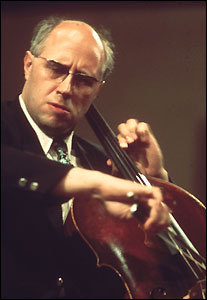There’s Bach and then there’s Bach…Levels of Interpretation
Pablo Casals
Mistislav Rostropovich
A “desert island” piece, if there ever was one, is the Bach C minor Cello Suite. I use the opening Preludeas a favorite listening exercise to help people both understand the power of interpretation, and their own inherent ability to perceive more than they realize. I begin by playing the first two minutes of a recording I absolutely adore—Mstislav Rostropovich.
Rostropovich playing the Prelude to the Bach Cello Suite No. 5 in C Minor
Everyone is moved. How could you not be? People thrill to Rostropovich’s deep expression, flawless phrasing, and singing, reverberant tone.
Then I play the same two minutes with the Casals recording.
Casals playing the Prelude to the Bach Cello Suite No. 5 in C Minor
It’s jarring after the Rostropovich. One reason, of course, is its older recording technology. But it’s more than that. Casals’ tone sounds thin and nasal compared to Rostropovich’s. Some of the chords even sound scratchy. His playing is less even. And there are imperfections.
So far no surprises. But then I play both recordings again (go listen again!). Invariably, the comments begin to change. People hear past the audio quality, they hear past the fingerboard slaps and occasional scratchiness. Now instead, they notice Casals plays with a much wider dynamic range than Rostropovich—he exaggerates the difference between softs and louds. They notice that with Casals, the high and low voices seem to have different colors, so that Bach’s contrapuntal dimension bursts to the foreground. While the Rostropovich has power and sadness, Casals plays with a much deeper intensity, at moments approaching rage, far less uniform an interpretation than Rostropovich. Above all, Casals seems to give every note both an individual intention and a destiny to connect to the next note, as they all accumulate towards the apex of each phrase. (listen to this powerful effect culminating in the two broken chords at 35”).
This isn’t a good-bad comparison. The Rostropovich performance remains sublime and I will always enjoy it immensely. But the Casals—that is, to quote my late teacher Leon Kirchner, an interpretation “of a higher order.” Once you experience this difference, you as a listener are never the same again. You now notice dynamics, colors, the breathing of phrases, the building and receding to and from important events—you notice all of this in all the music you enjoy. Your listening itself attunes to a higher order.

